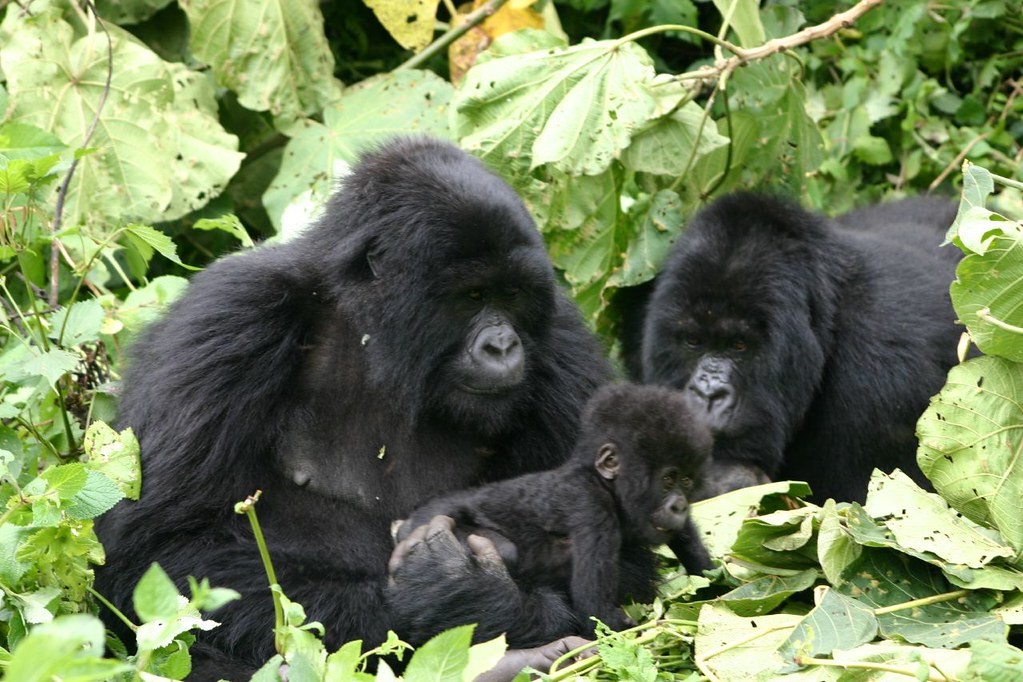Rwanda
Rwanda is not a large country – 149th in the world, and the 4th smallest in Africa. It lies towards the west of the East African great rift valley. As such, while not huge, there is a wide variety of wildlife.

Despite the fact, that there are reserves larger than this whole country, but still, this country has 5 national parks.
1. Volcanoes National park : while relatively small compared to some of the largest reserves on the continent (the Selous game reserve is 5 times the area of the country) this park is only 160 square kilometres (61 square miles), but because this reserve is on the border of the country, and there are vast reserves across the border. This reserve is part of the Virungas mountains, and is just one of the homes of the mountain gorilla. It is also home to one of our destinations we offer (I hope for this to grow over time).
To read more or book a trip, click here
2. Nyungwe National Park: Containing 393 square miles (a little over1000 square km). The reserve is covered in rainforest and is incredibly biodiverse. With 13 species of Primate (1/4 of all of Africa Primate species), including Chimpanzees, L’hoests monkeys and many more. There are 15 trails, so there is far more to do than just chimpanzee tracking which is what many people visit for. Other than primates, there are a wide range of wildlife (rainforests are incredible because so much wildlife is packed in). There is a small population of Leopards as well as serval cats, and even golden cats. Other species include buffalo along with a whole range of antelope. Until 1999 there were forest elephants but these were lost. There are plans for them to return.
3. Akagera National park: Protecting the largest central African wetland, this reserve is once again a big 5 reserve, after the reintroduction of both Rhino and Lion into their former range. Protecting over 8000 big animals – this number has increased dramatically in the last 10 years since the reserve was fenced back in 2014 – making poaching far harder. There are 11 species of antelope alongside giraffes zebras hippos and crocs. Covering 1122 square km (433 square miles) without poaching, this reserve is large enough to survive long-term.
4. Gishwati-Mukura National park: Made up of 2 different forests the larger Gishwati and smaller Mukura, forming a total of 34 squre km plus a buffer zone. Despite its tiny size, it hosts a group of 20 chimpanzees, as well as Lhost monkeys, as well as Golden monkeys and blue monkeys.
In the long-term, I will aim to link to all of these, never-the-less that will come in the future. do get in touch if you can help with that..
Links to areas to visit will appear below.
The Rwandan president Paul Kagame intends to make conservation his countries next battle
- Tim
- March 24, 2021
The individual footprint people in Britain reach the annual carbon footprint of the people from Rwanda and Burundi in as little as two weeks
- Tim
- January 30, 2020
The website was hacked! nothing lost, and wildlife tourism to Africa can return
- Tim
- October 7, 2021
The virungas national park continues to be dangerous for rangers
- Tim
- February 5, 2021
In a human crisis the Natural World often does incredibly well
- Tim
- April 10, 2020
